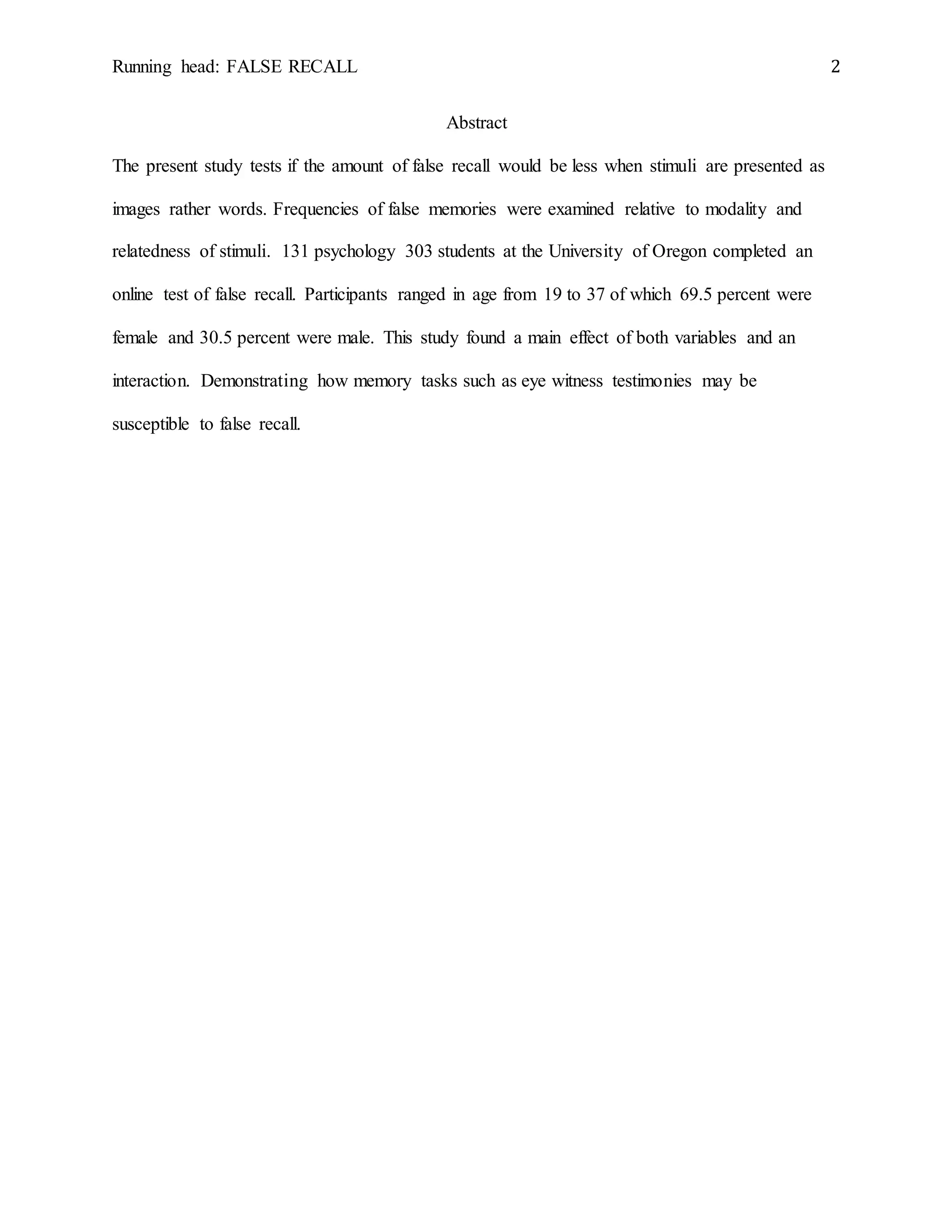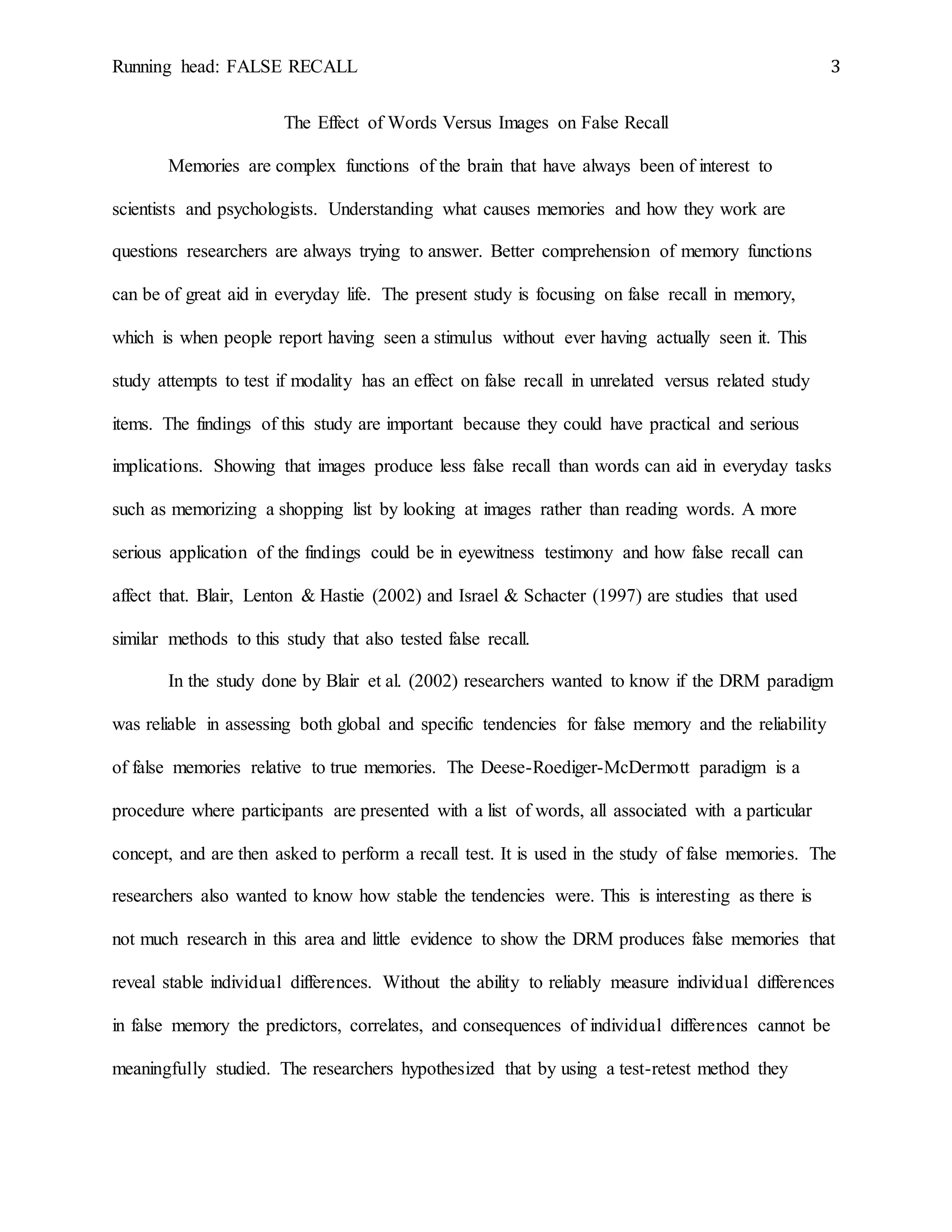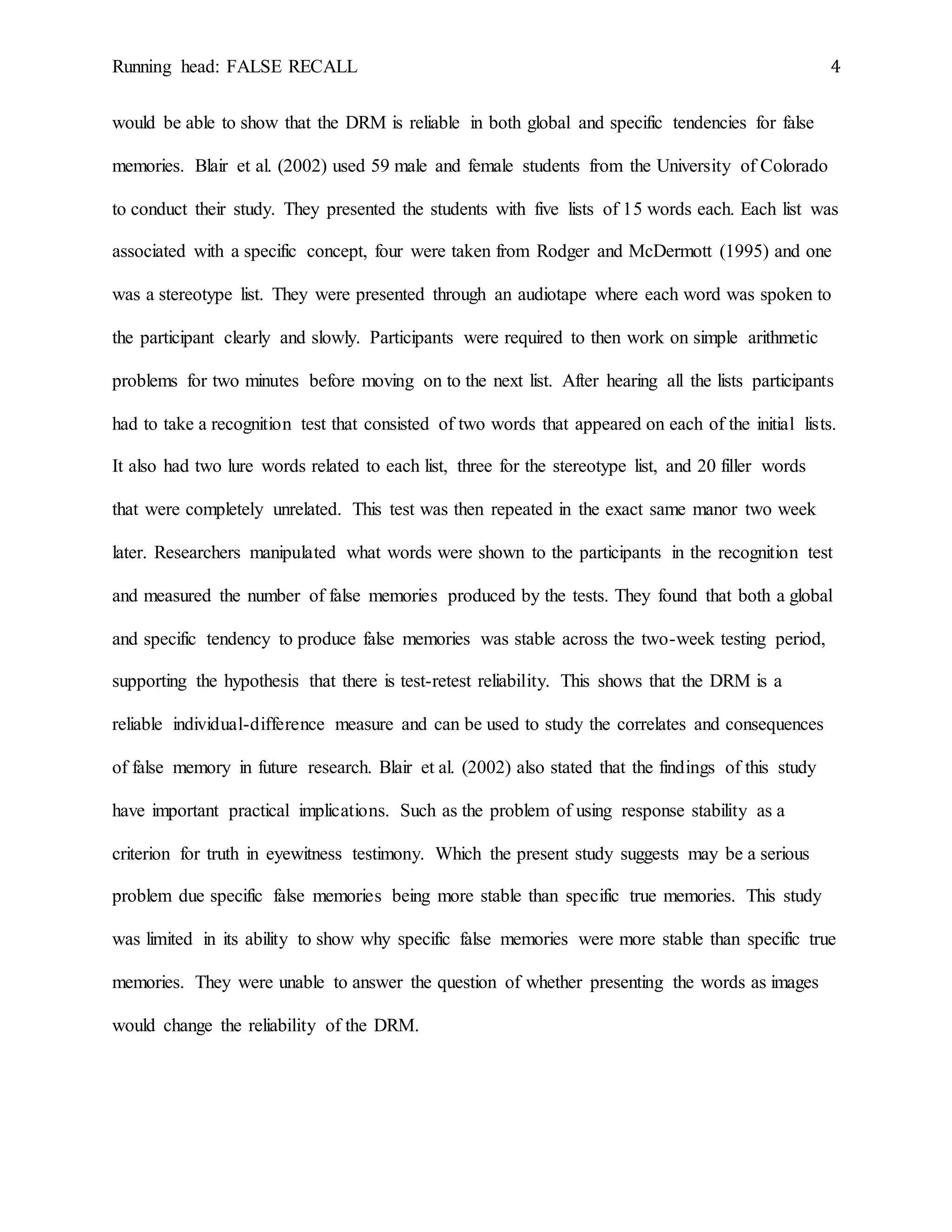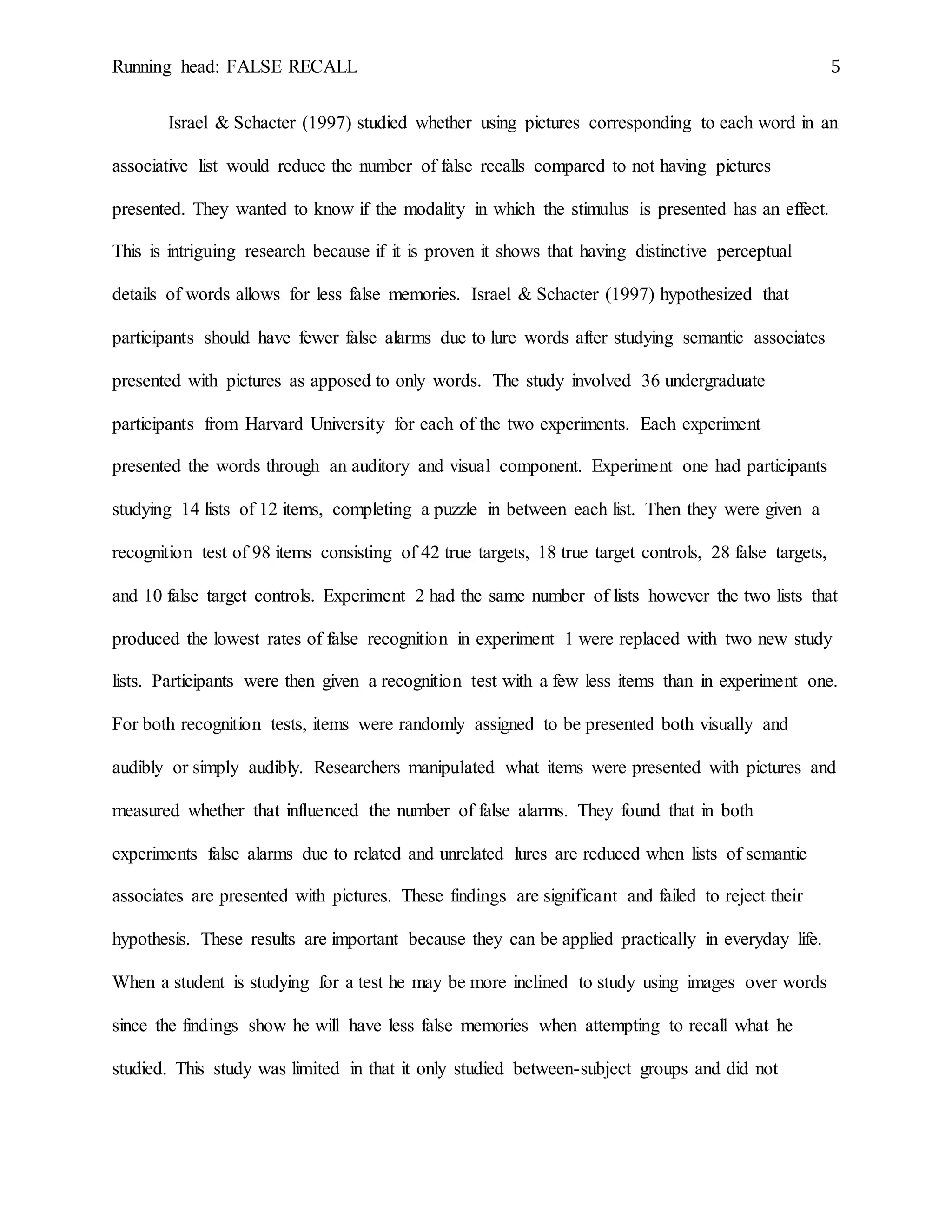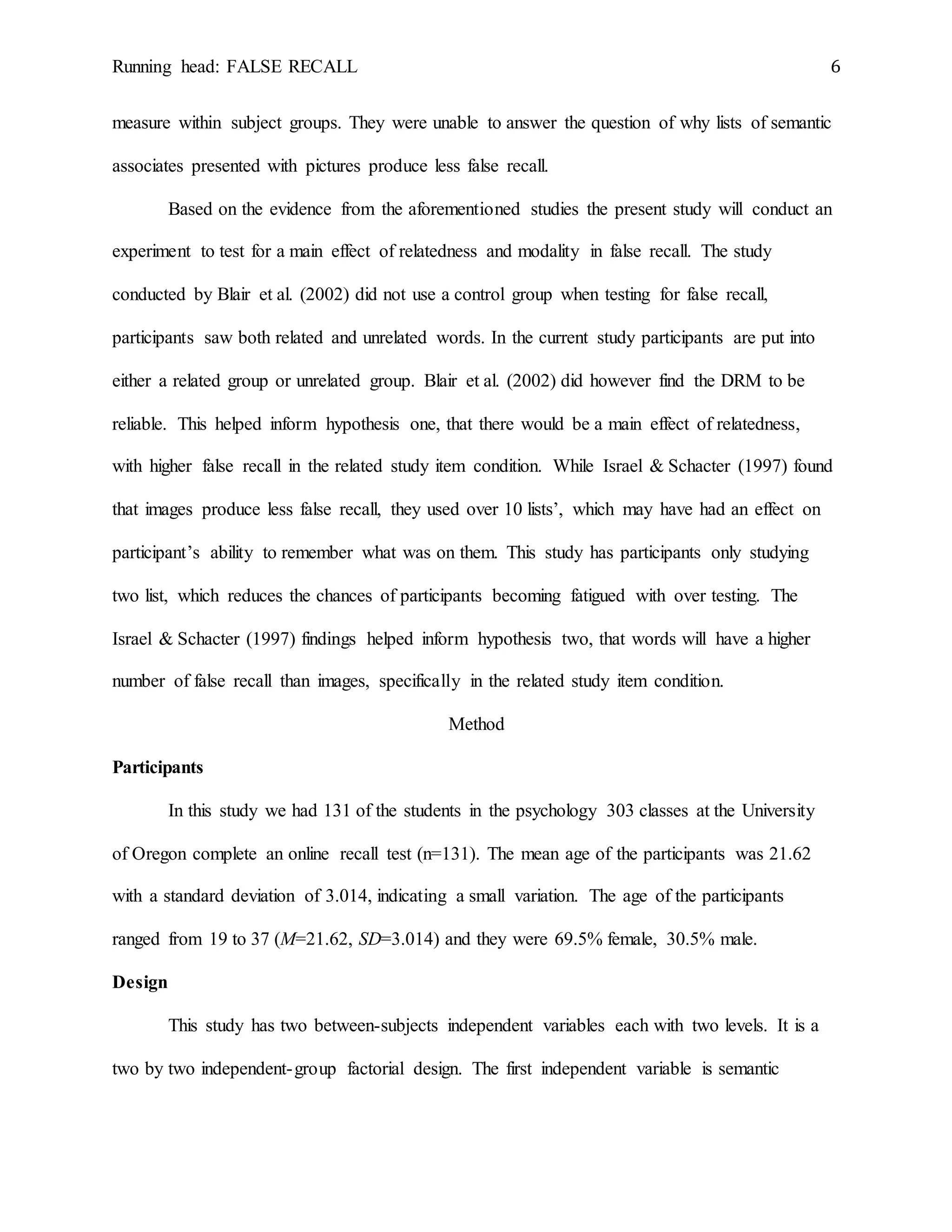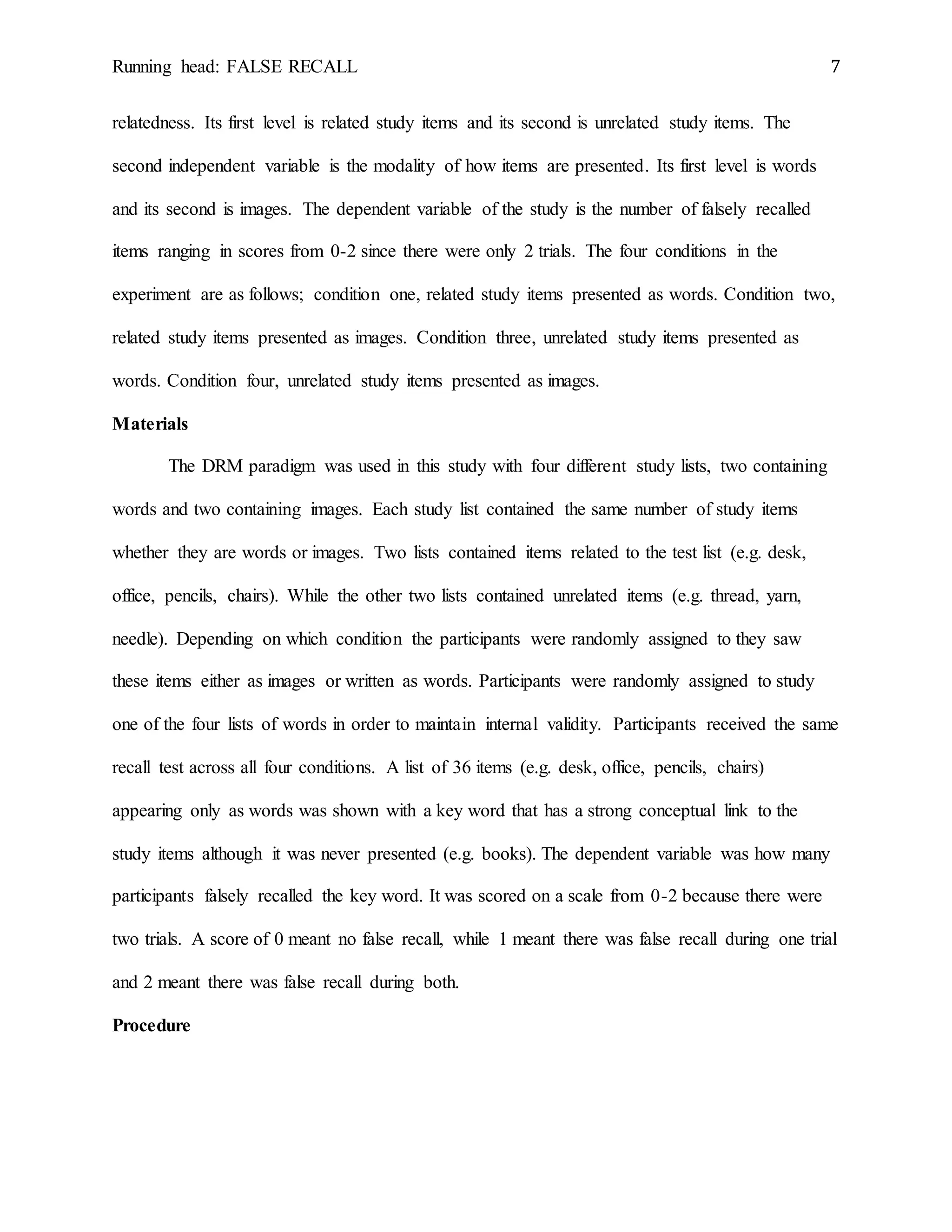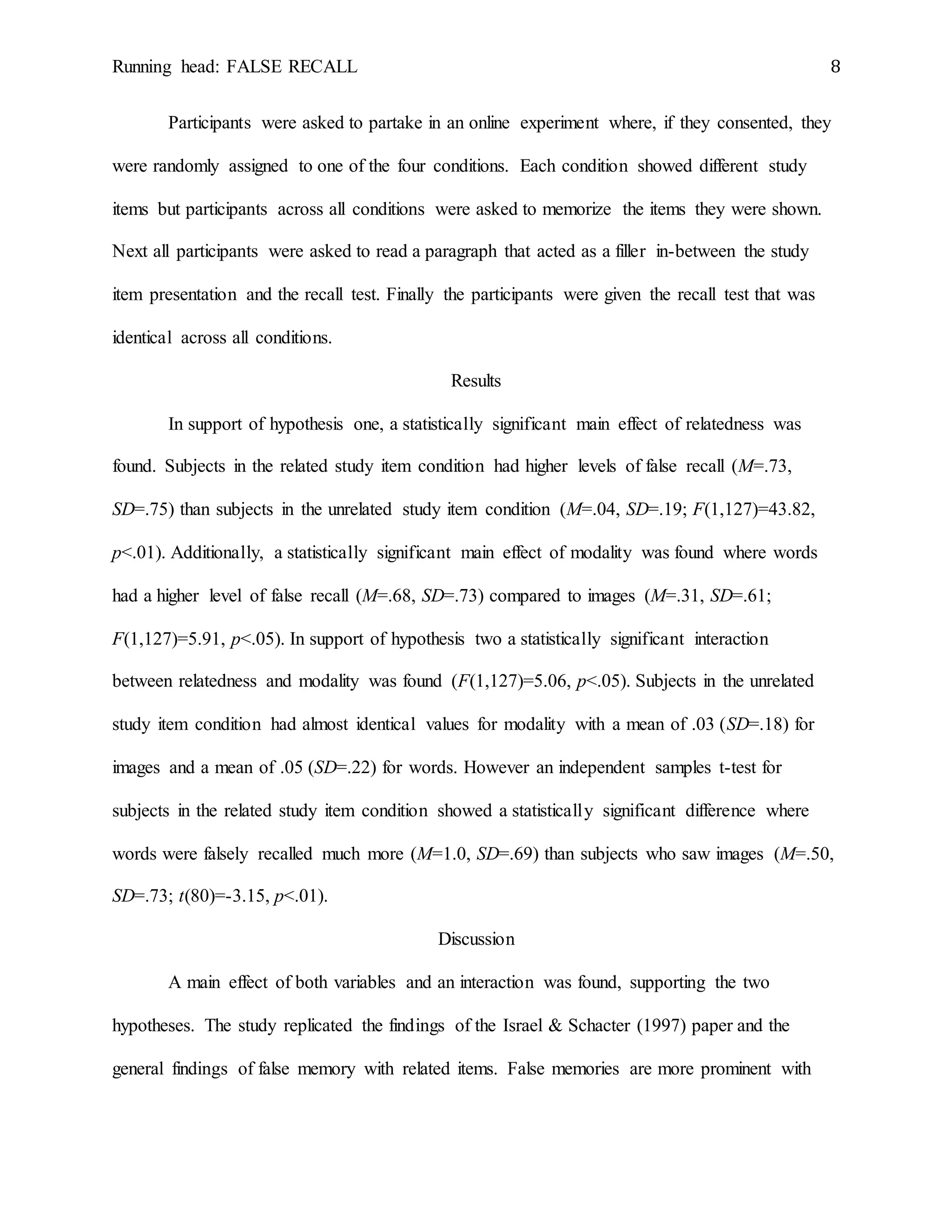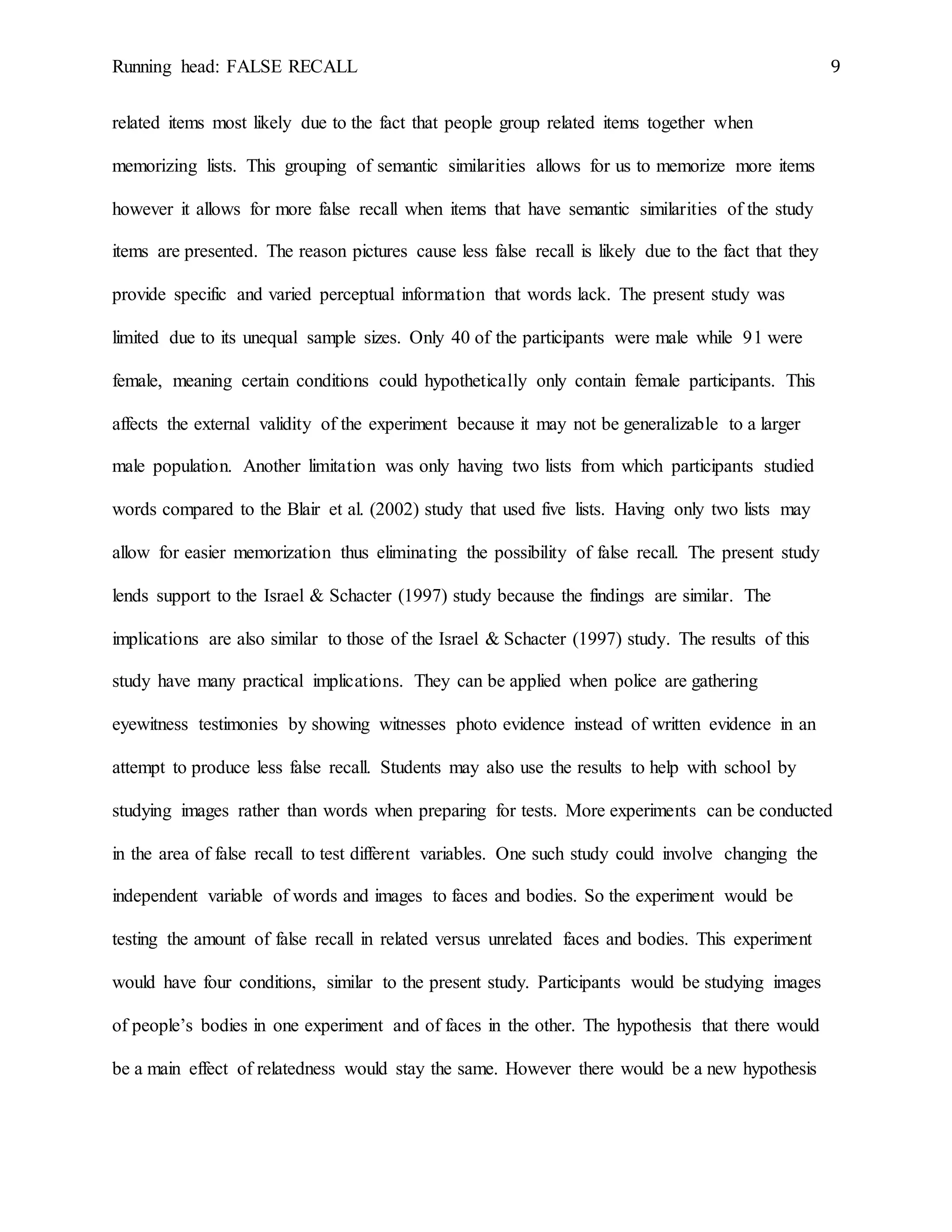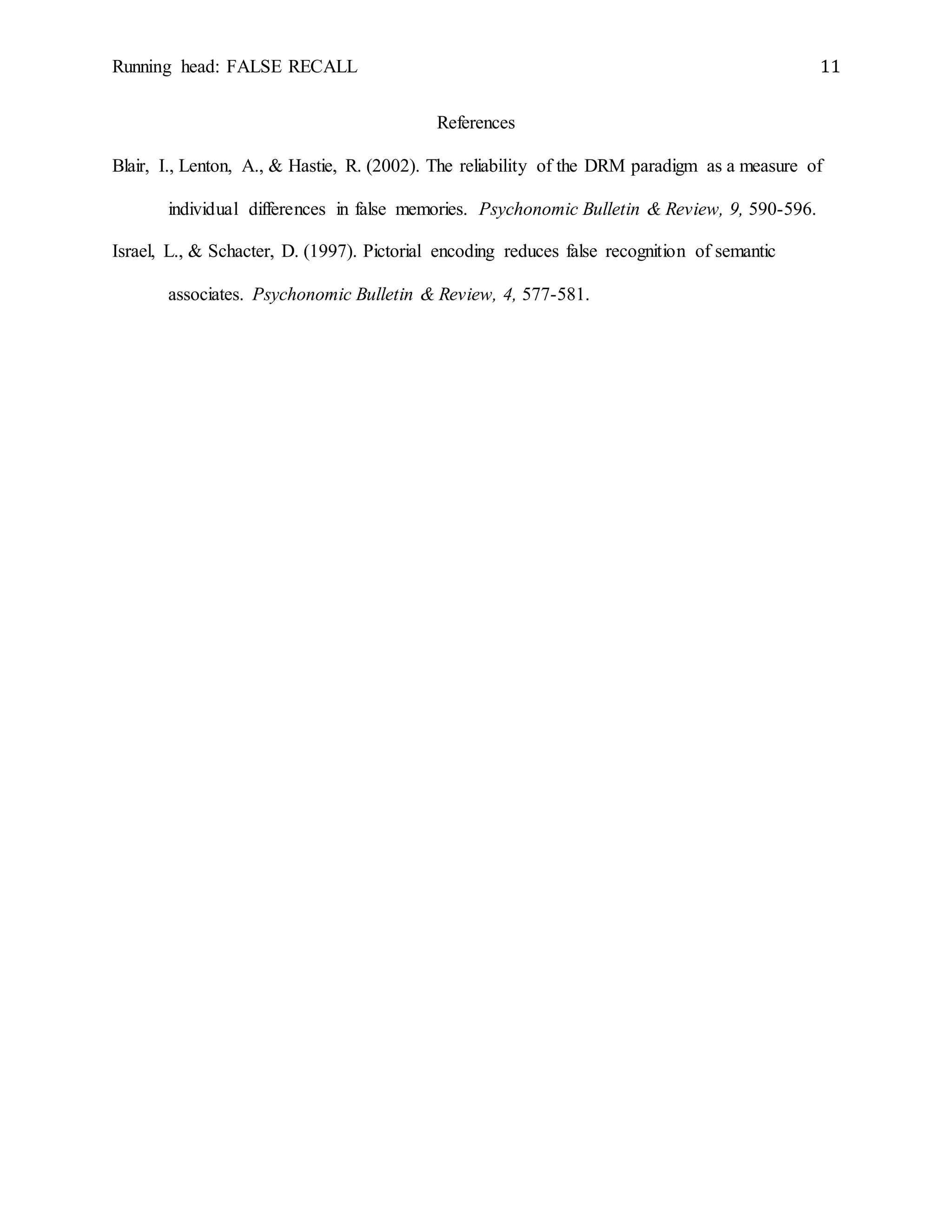This study examined the effect of modality (words vs images) and relatedness of stimuli (related vs unrelated items) on false recall. 131 university students completed an online test with 2 study lists, one containing related words/images and the other containing unrelated words/images. The study found a main effect of both modality and relatedness, with higher false recall for related items and words compared to images. This suggests memory tasks like eyewitness testimony may be susceptible to errors from false recall.

